Shelby Mustang GT500 vs Alfa Romeo Giulia GTAm
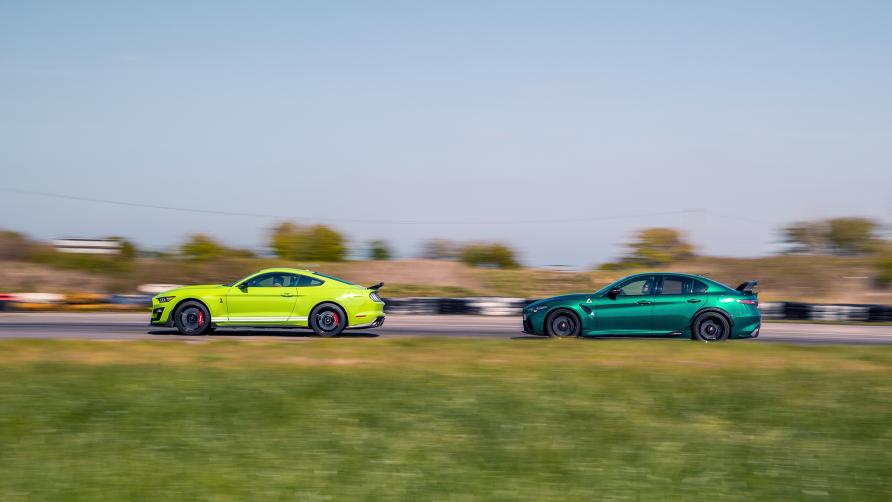
I am being probed. “No, not a chance. are you revving it too much?”
“I don’t think so...” I mutter vaguely, failing to mention that I’m actually holding the car some 1,000rpm under the level it should be.
“You’ll have to take it out of Track mode then. It’s way too loud...”
“Ah. Uh. Yes. I shall do that!” I exclaim brightly, fiddling theatrically with a large toggle on the dash and lifting off the throttle. “That will be fine then – thanks!”
I drive away, leaving a confused looking marshall swatting his noise-o-meter at empty air. The Mustang wasn’t in Track mode. It was in the quietest setting I could find, and it still failed the noise test so spectacularly everyone thought the exhaust had fallen off.
Photography: Jonny Fleetwood
This, it seems, is par for the course at this point, because you’re looking at the death of subtlety. A citrus green Ford Mustang GT500 and a dark green Alfa Romeo Giulia GTAm. Both the snowy peaks of their respective ranges, amped up, superhero incarnations of cars that also come with much poorer relations in their respective family trees. Both are noisy, inefficient and a bit silly. Both are therefore, according to my frothing inner child, utterly brilliant. This is overkill done two ways – European precision vs American clout.

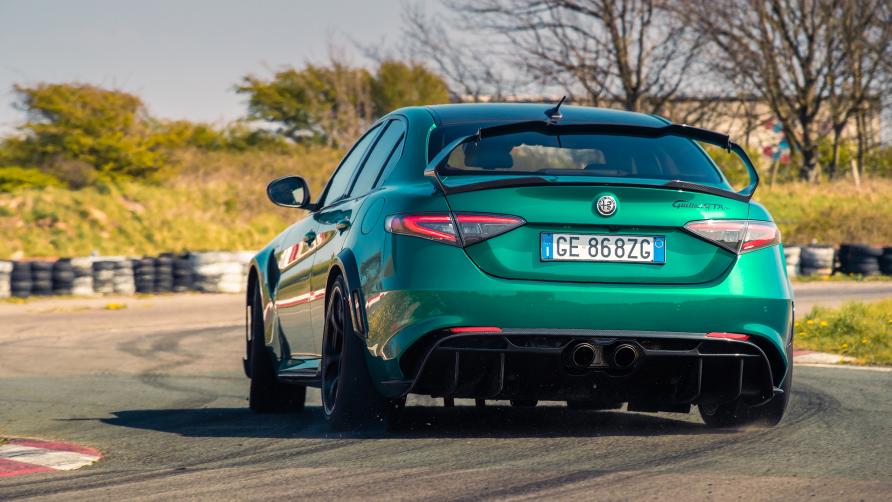

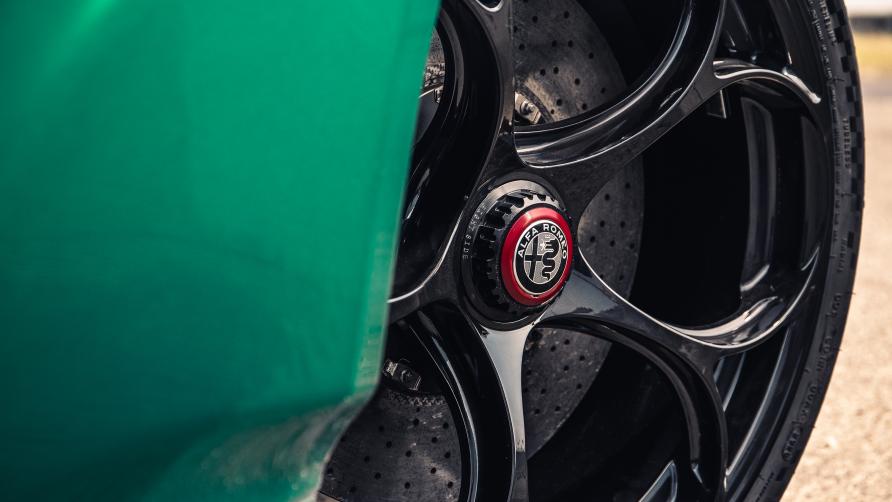
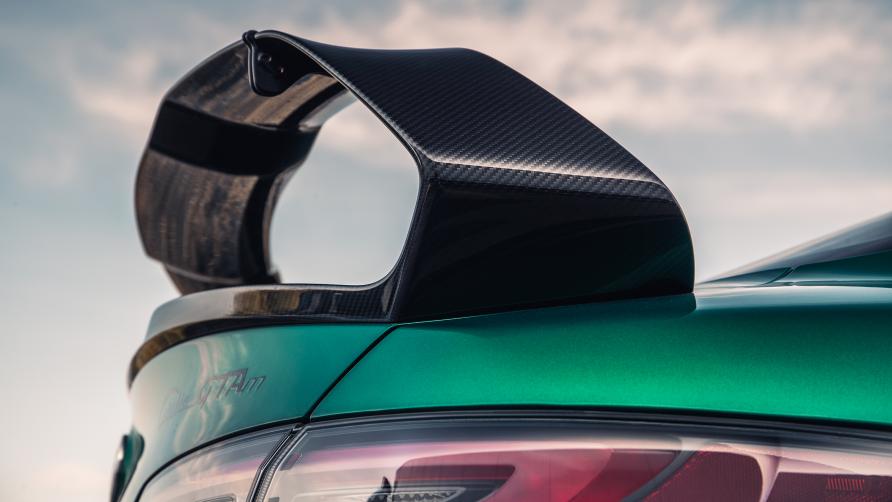
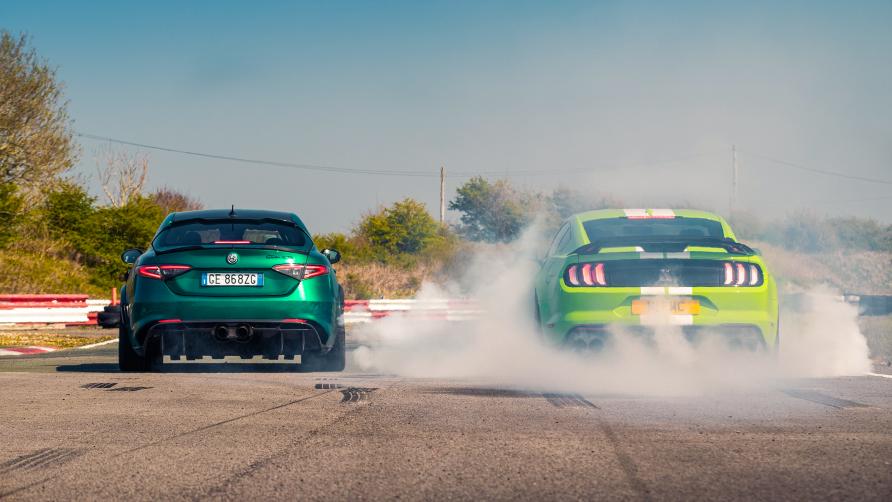

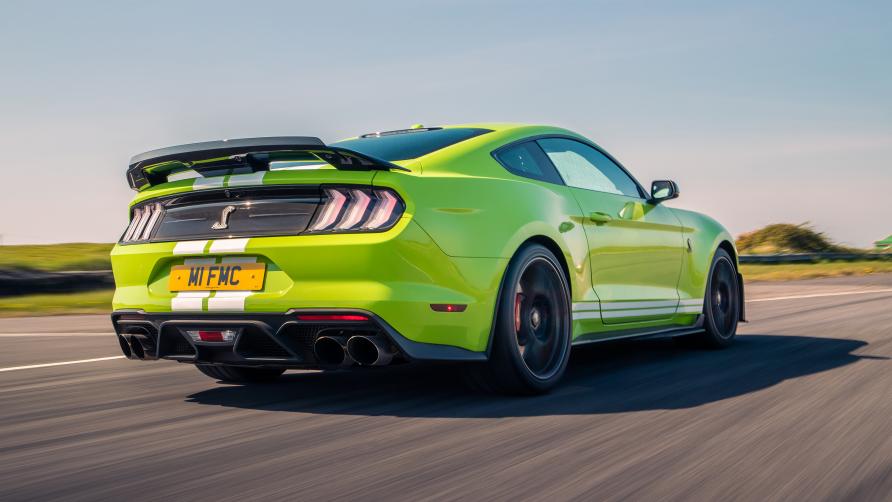
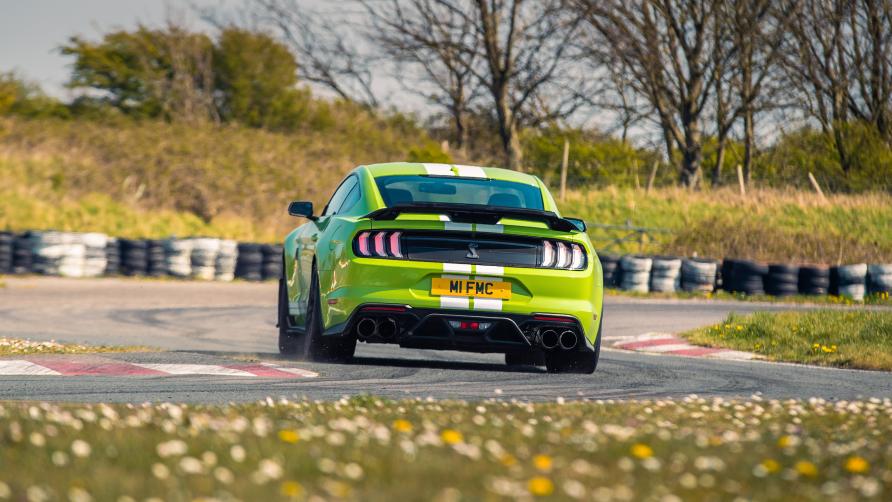
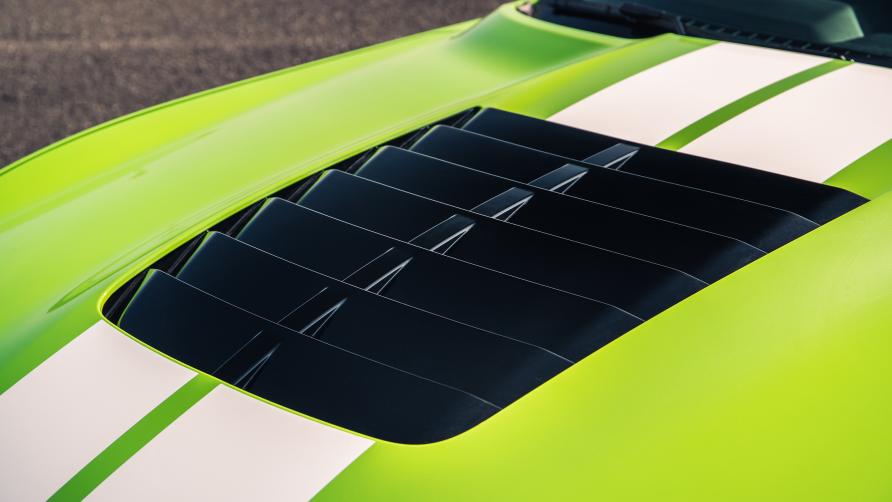
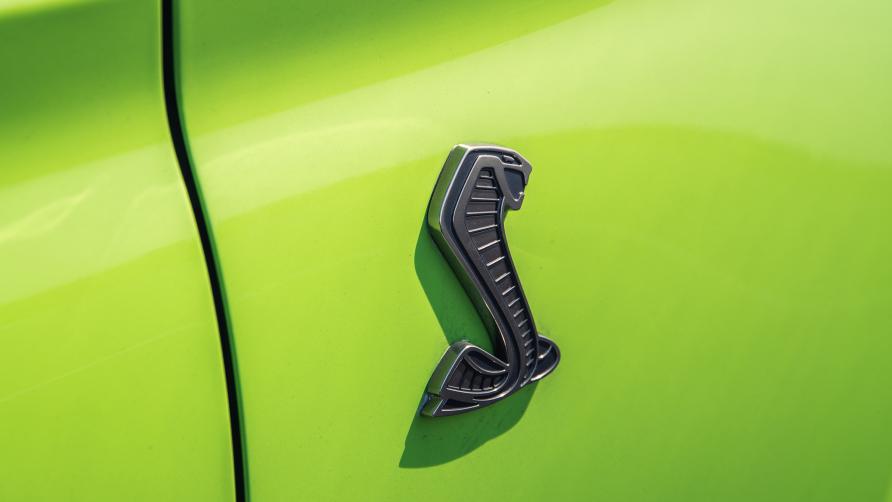
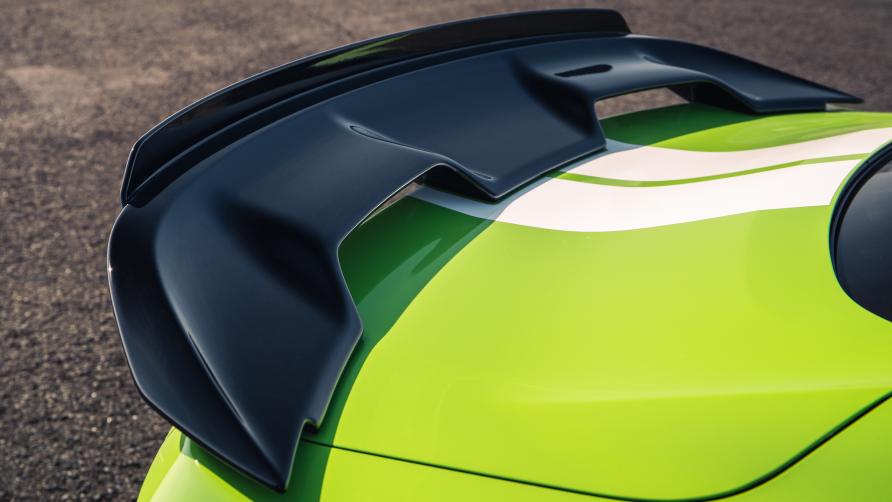
The Mustang is immediately the more attention grabbing, simply because it is possibly the loudest road-going car I have ever tested. The four tailpipes are big enough to lose a child in, and it failed every decibel test metric we could throw at it, the ‘Grabber Green’ paint being as much an assault on your eyeballs as the exhaust is on your ears. It is wicked and widened, sharpened, adorned with channels, a voluptuous carbon rear spoiler and an ankle-scythe of a front splitter. It’s got a slotted bonnet bulge the size of Glastonbury Tor.
It is also quite possibly – in America at least – one of the best value fast things in existence. Priced as you see it here at just over £50k (RM290k), this is a rear-wheel drive, seven-speed twin-clutch Mustang with MagneRide active suspension and a great deal of know-how wound into it. Oh, and a whopping great 2.65-litre Roots-type supercharger with a 5.2-litre V8 bolted to it. And yes, I do mean that way round: at peak speed, the ‘charger’ itself takes 90bhp just to power it. It adds up to a car with 750bhp or thereabouts, 3.5 seconds to 100 kph and a top end of 290 kph. Talk about literal bang for your buck. It’s a sledgehammer of a car.
The Alfa, on the other hand, is the keenest edge of the Giulia range’s blade. The standard Giulia GTA brings with it an adjustable front splitter and a ducktail rear spoiler courtesy of Alfa’s aero-conspirator Sauber Engineering. It brings a mildly more powerful 2.9-litre twin-turbo V6 than the standard QV (532bhp vs 503) – liberated mostly via a centre-exit Akrapovic titanium exhaust system and relatively minor engineering tweaks like a larger turbo compressor wheel, shinier pistons, reinforced connecting rods, bespoke valve springs and more efficient oil coolers. There’s an 8spd paddleshift. It also presents a viral overload of carbon: driveshaft, bonnet, roof, front bumper, front wheel arches and rear wheel arch inserts, and the shells of the Sabelt sports seats. All are weave. The tracks are 50mm wider. The wheels are telephone dial cool, but racing centrelock. The brakes are lighter-than-steel ceramic. It’s not playing.
The GTAm in the pictures takes all that one step further, adding with subtraction: less weight, less comfort, less passengers. The windscreen is thinner, the rear window polycarbonate. There are no back seats, replaced instead with a colour coded half cage, a plumbed-in fire extinguisher and little shaped recesses for racing helmets. Even though the wing is taller, the regimen means that this car is roughly 100kg lighter than a standard QV. Making it just under 400kg lighter than the 'Stang.
But the GTAm is more than just a hot rod – there’s no more power than a standard GTA, but this is a Giulia that brings with it F1-driver shakedowns, utter focus and glorious commitment. The cambers are aggressive, the settings aimed at a bullseye of a lap time. It costs £158,000 (RM920 k) Cough.
And so these cars’ opening gambits are obvious and unsubtle, but who cares? That’s the point. The Mustang has presence sweating out of every pore. And I’m not just talking about the eye-flinch of a paint job – when this thing does a drive-by or appears in your rear-view mirror, you pay attention, because it manipulates attention like an artist wrangles paint on canvas. First people hear it. Then they see it. Then they try and take a picture while mouthing swear words. It’s like watching a particularly obscene movie with the sound off.
The Alfa is more subtle, but with that double-height carbon rear wing, slashes of carbon aero, gaping vents and scraping adjustable front splitter, it’s not exactly melting into the background. See it among other cars and it’s a predator of a thing, slinking through herds of traffic, sleek and arrogant. It rumbles, but it’s a silky gruffness and it hasn’t got the aural demand for attention of the frankly comical Ford. And yet, far from being the obnoxious horrors that they sound, these two seem to please everyone as items of street theatre.
The Mustang initially feels bulky and thick, comfortable, and yes, heavy. There’s a heft to everything, from steering to brakes, the huge steel discs nevertheless providing the kind of stopping power that creases tarmac. It is, surprisingly – apart from the endless noise – comfortable. Like a nuclear armchair. Overtakes? You’ll be past the target before you can wonder about the gap. It’s awesome, and driven softly, manages about 7.65 km/l. On track, it will drop to 3.6.
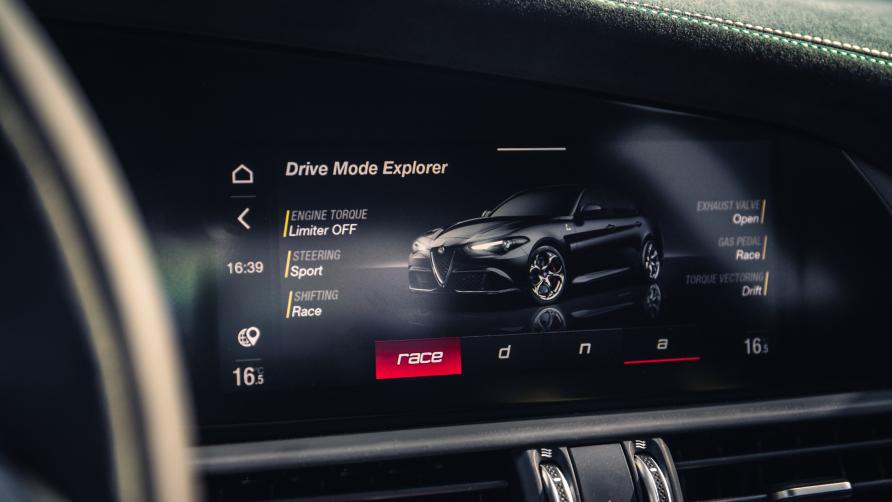
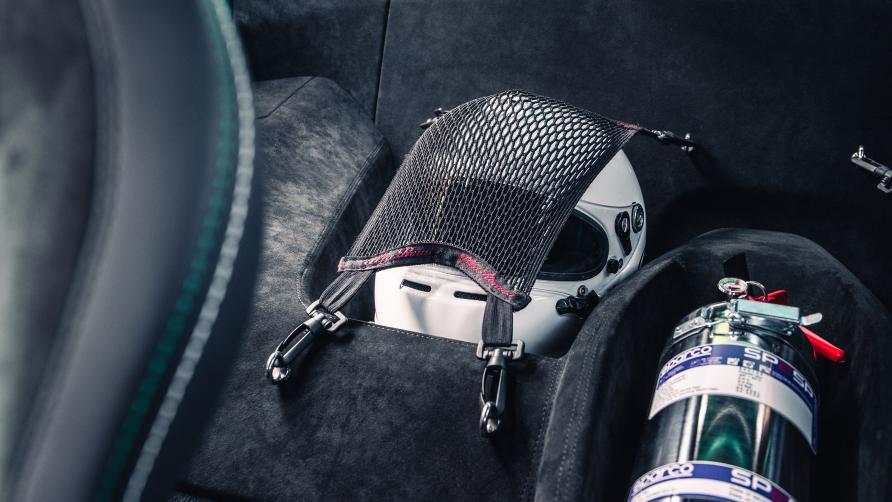
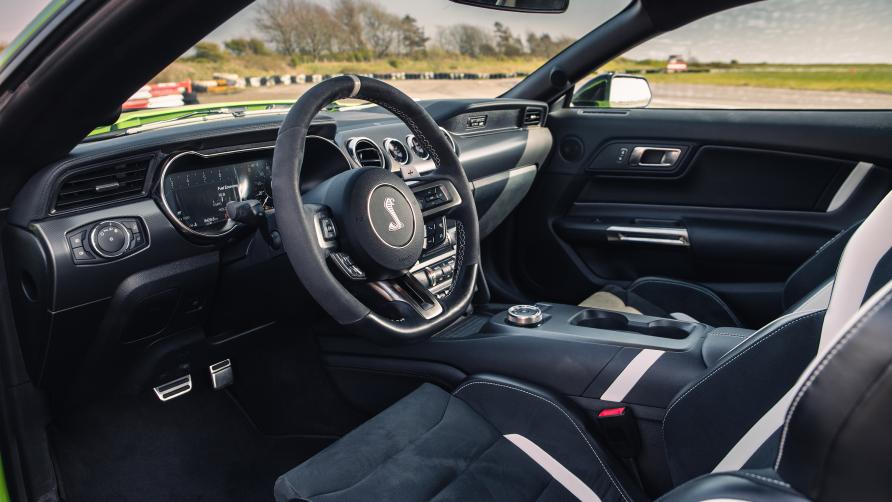
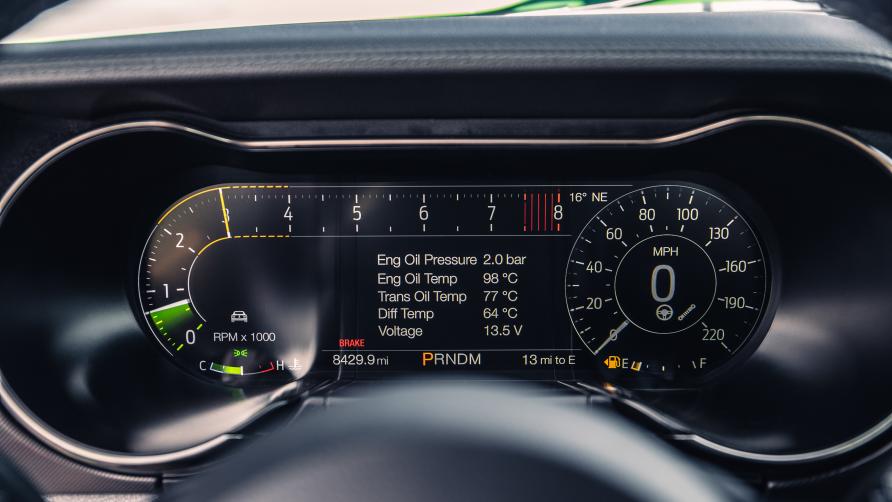
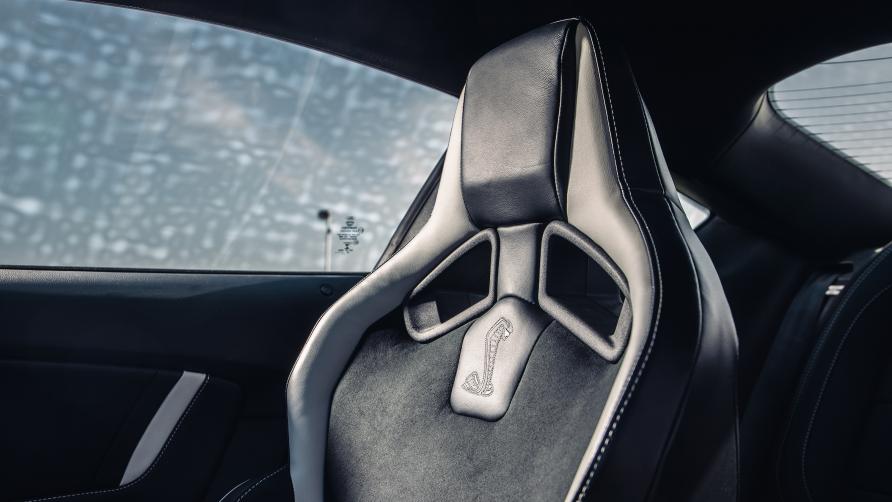
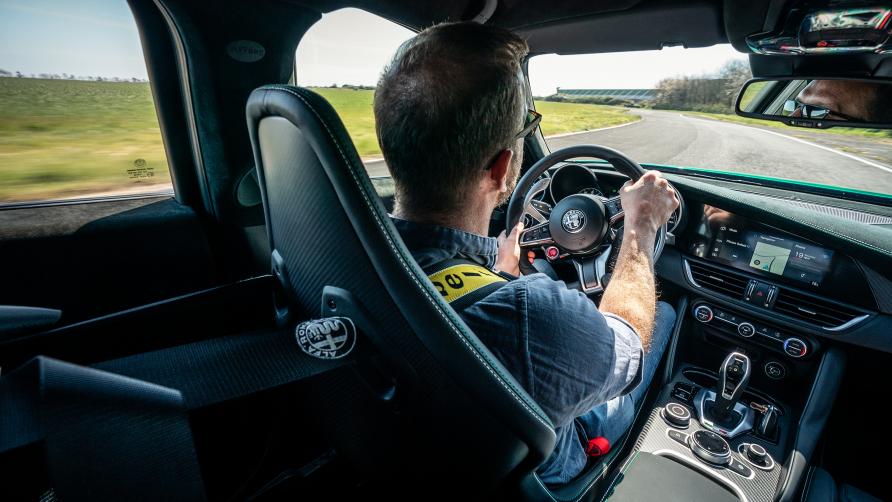
The Alfa, on the other hand, feels nervous in comparison. Frenetic, border collie-ish in its intentions. But it’s also relatively usable, supple and direct without being crashy. It feels expensively damped, devoutly European in texture, more compact, even though the physical differences aren’t actually that stark. It too, can slice open veins of overtaking that don’t really exist for other cars. Both, to be fair, are a bit too fast for a proper workout on a public road. So it’s off to the track, and where we came in.
The 'Stang can, on occasion, feel like a bit much. There’s a place in the rev range where the GT500 is making a noise like a supersonic tuba, but not actually going that fast – a disparity that’s actually a bit embarrassing. But push through that, slap the incredibly long-travel throttle to the floor, and the edges of that noise sharpen. Then fray. Then become raw. And the GT500 Mustang starts to eat. What was a noisy but largely comfy bus suddenly rears up slightly and starts to yank the horizon backwards through your eyeballs at 7,500rpm. This engine is codenamed ‘Predator’, presumably because it hunts down all the available oxygen in the immediate vicinity. Conscious thought folds like an old TV suddenly powered down, the picture compressing down to a single point of light. That point is where you’re aiming. Everything else is just static.
A lot of things happen at once. If you’re progressive, the back end will squirm during changes but not lose integrity completely. Stamp the throttle in the first two gears and you’ll just evaporate the rear tyres. But be a little bit more judicious, and the GT500 will hook, even on its more road biased Michelin Pilot Sport 4Ses. Christ knows what it would be like on the Cup2 super sticky ones – there’s an optional £13k (RM76k) ‘Carbon Pack’ that does away with back seats and adds carbon wheels and track tyres. And while that mighty engine asks a lot of very pointed questions, it turns out that this is a Mustang in which the chassis actually gives satisfactory answers.
It’s not the last word in precision. But this car pulls an Alice in Wonderland, shrinks to fit, resolves the faster you go. The pitch and roll that feels so comfortable on the road gets muted but not deleted. The Tremec seven-speed box flicks gears instead of handing them off, the throttle feels like it gets six inches shorter. The throttle pedal still feels like a primitive traction control by being so lengthy, and the steering weight increases without adding a deal more texture, but the Mustang now reacts to inputs, rows hard to translate your instruction through to the road.
"Where a lot of modern cars are datavores, these two are all heart, noise and expressive Big Feeling"
And it’s fast. The supercharger noise may be lost in the grandstanding from the exhaust, but its effects are felt right through the rev range. Surge is endless, smooth and intoxicating. The problem here is that the Mustang goads you into a false sense of security, when actually you’re playing Russian roulette with half the chambers loaded. Push hard enough for long enough, and ‘if’ will become ‘when’. I had this moment, and it was... instructive. I trod more carefully after that, fear being a highly effective motivational strategy.
The Alfa Romeo Guilia GTAm is different. More elegant and devoted. Utterly surprising. It is, to be blunt, the antithesis of the Mustang while still being largely in the same frame of reference. Where the Mustang uses the blunt force trauma of heavy horsepower, the GTAm is the surgical balance of lighter weight, suspension tuning and racing aggression. Ford is engine, Alfa is chassis. Within 50m you can feel where the Alfa is coming from, and its crispness is total. It is fast and torquey, but it’s not got the headbutt of shove that the Ford manages. But it takes a much shorter distance to stop it with the equally brutal ceramic brakes, and you will carry more speed pretty much everywhere.
In fact, you end up overdriving it for a little bit, just until you get used to being more delicate with the inputs. It does not thrive on pointless aggression – it won’t do a burnout, and if you donut the car, the box knocks itself into neutral. If you shank it into a drift, it gets grumpy, but if you go really, really fast and allow it to fade into power oversteer, it is balletic. Push hard enough, and it’s a fret of emotions all tangled up in a shivery split second. Eventually I back off a bit, just to get a breather. The car is clever, and I exist to feed it, and play with it. But it still maintains an air of superiority. It’s a cat, basically. But get it right, do what it’s designed for, sew a piece of road tight with the glorious thread of this engine, and the GTAm is simply stunning.
This Giulia could have been so very easily messed up. A glorious vision that developed cataracts and got blurry at the edges, diluted by the reality of having to have normal people drive it, sane people with a conspicuous air gap of talent. It’s not enough to just make something fast, it has to be thrilling, and enjoyable for non-F1 drivers. Alfa has not messed up here. The GTAm is fun, fast and fluid.
Of course, I want to argue that these cars should be manual, for maximum enthusiast points and an atavistic need for three pedals to dance with. After all, they very possibly won’t be the fastest things at a serious trackday, so they might as well be even more engaging. But actually, when you start to boil things down, these gearboxes are so good, it matters little.
No, they can never be as deliberately satisfying as getting that gearchange just so, but their metronomic brilliance ensures that you get more gears bang on, and that leaves you with more brain space to perfect lines and speed. You’d be surprised at how much more time you devote to getting a corner right when you’re not thinking about the how and when of manual gearchanges. It’s not better, but I’d argue that these days it’s also not worse. And I’m also not entirely sure which of these cars is actually faster. Anything with big long straights and I think the GT500 would edge it. Anything that relies on changes of direction and outright grip, and I think the Alfa would mince the fatter Ford.
But let’s be honest here, these two don’t compete. At all. They just exist in a putatively similar space. If you want something to engage with, immerse yourself in, you need a car like one of these. They aren’t the fastest – there are lightweights that would sucker punch them for corner speed, supercars that will eat them alive at the top end. But they feel exciting, and interesting, and joyous. And yes, a bit daft.
But where a lot of modern cars are datavores, operating on a skein of input that’s only a short leap of processing from thought, these two cars are all heart, noise and expressive Big Feeling. And that’s what makes them great. Remove the emotional insulation that you get with a ‘normal’ car, and you get gale force experiences. With electric cars redefining the experience of performance, these cars are becoming increasingly anachronistic. But they’re the ones we’ll rue. The ones kids point at. They vibrate with the kind of purely petrol-powered energy that got us all into cars in the first place.
And yet, in a real sense, the future has already been mortgaged against the need for increased efficiency. There’s a sliver of hope in the shape of synthetic fuels but the fact remains that manufacturer’s focus will inevitably be shifted away from stuff that’s wantonly unnecessary. Which means when you’re talking about the high horsepower range-toppers in current product cycles, are we actually looking at the ultimate iterations? Possibly not, given that we have just under a decade left to go in the UK before legislation change, so there’s time for some last-gasp fireworks. But from what I’m looking at here, these two are giving it a good go already.
I hesitate to use the word ‘ultimate’, because it’s worn so thin these days that I’m not sure it even has much relevance any more. Everything seems to be an ultimate, from dog bowls to trousers. And that’s a bit sad, because in a world where everything is an ultimate, there is no future. It suggests we have peaked. Given these two, I don’t think we have to worry just yet.

